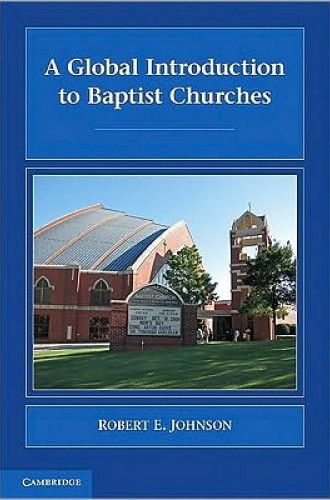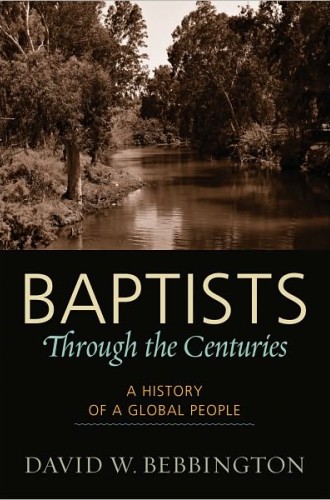What makes a Baptist?

A sign on the door that says “Baptist Church” often offers little guidance as to what one may find inside. Will there be speaking in tongues? Strict Calvinist theology? A prosperity gospel? A strong political message? A high liturgy? Variations in names—“First Baptist Church,” “Apostolic Baptist Church,” “Burmese Baptist Church” or “Full Gospel Baptist Church”—may offer clues, but even a denominational affiliation (Southern Baptist, National Baptist Convention) will leave open a very wide range of possibilities.
Baptist history has no obvious plot, not least because no Baptist church need claim any connection with another, past or present. Scholars who devote themselves to interpreting Baptist tradition must contend with a community that is not sure it has one. Baptists who want to explain their practices or beliefs are as likely to appeal to the early church or the book of Acts as to texts or founders from their past. In fact, Baptists have no agreement about whether their story should start with 17th-century English dissenters, 16th-century Anabaptists or the first-century church.
Read our latest issue or browse back issues.
Undaunted, Robert Johnson and David Bebbington have undertaken introductory overviews of this fractious family. Johnson’s summary is a cross-section of the Baptist present, with historical background, while Bebbington’s is a thematic history, with interpretive glimpses of the present.
One of the few things clear in the Baptist story is its Anglo-American axis. Baptists as a continuing community emerged in England and grew there and in the United States. Today the U.S. still has well over twice as many adherents as the rest of the world combined. In this sense, Baptists have lagged in the reversal taking place in most Christian communions whereby the membership predominantly shifts to the Southern Hemisphere. This situation raises the question of cultural fit, of whether or not this form of Christianity—so doggedly congregational, so solicitous of the individual believer, so democratic in polity—has a deeply symbiotic relation with the Anglo-Atlantic West.
Both of these books have the word global in their titles, but they take rather different approaches to this dimension of the story. Bebbington organizes his work topically, with each major chapter focused, as he says, on “a problem and not a [chronological] period.” For him, the global telling of the Baptist story involves setting it in the wider framework of Christian history and taking the missionary spread of the churches into fuller account. But the central focus is on formative issues and turning points in Baptist history. He traces, for instance, the revivalism that transformed Baptists from a small sect to a large movement and the mission societies that formed the skeleton of denominational organization.
For Johnson, who has extensive firsthand knowledge of Baptists in Latin America, the word global portends a more fundamental change in outlook. In his view, the knowledge that the Baptist community has become a multicultural one suggests that its earlier history should be reexamined to emphasize the various strands of diversity already present there. Johnson takes it as an axiom that Anglo-American voices should no longer define Baptist identity.
Both books take a largely chronological approach, but Johnson gives many parallel regional histories while Bebbington gives a unified account. Johnson understands the story through a backward glance, reading the roots from the perspective of the present diversity of Baptist life, while Bebbington offers a more narrative approach, treating the tradition as a protagonist who at certain contingent moments took this path rather than that one.
Readers will find much more information about the contemporary multicultural Baptist community in Johnson’s work, including enough to suggest that the turning points in Bebbington’s history are not always relevant to what one finds on the ground among Baptists in Africa or Asia. In Bebbington, readers will find more to help them understand the trajectory of Baptist development and more light shed on current North American conditions.
Baptists often present their principles (believer’s baptism, congregational autonomy, authority of scripture, religious liberty) as timeless deductions from the New Testament. Bebbington makes clear the way these tenets emerged.
For instance, Baptists are fundamentally creatures of the Reformation. If Baptists assume that each person has the ability to read and understand scripture for herself or himself, it is very hard for there to be Baptists until Bibles are available. Thus the two elements so important to the Reformation—the Bible in the local language and the printing press—were especially crucial to the development of Baptist convictions.
Also, if Baptists presume a believer’s church that exists by choice separate from the world, they require social space for such a body. In the pre-Reformation church there was a certain space for such communities—monasticism. Monastic bodies were distinct from the world, upheld regenerate standards of life and normally required personal commitment for entrance. It may seem strange to compare monks and nuns with Baptists, but the connection is not fanciful. In a real sense, the orders represented the closest thing to a believer’s church.
The Reformation brought with it the conditions that allowed this transition to a worldly form of that ideal: relatively plentiful Bibles in the language of the people and space created by the breakup of Christendom for the creation of new ecclesial communities.
The Protestant reformers and the Catholic counterreformers agreed in rejecting the kind of religious liberty sought by the Anabaptists. The Anabaptists were victims of an ecumenical persecution that drove them to extinction or a sectarian separatism. Only in England, with its peculiar history and the resultant de facto tolerance of Protestant diversity, were Baptists able to establish a foothold in the wider society, alongside other dissenters like Congregationalists, Quakers, Ranters and Levelers. This factor relates to the ambivalence among Baptists in identifying themselves with the Anabaptists. There are real theological differences between the groups (surviving Anabaptists were pacifist and separatist—even communal—in ways that Baptists were not), but there was also a history of stigma and persecution associated with the Anabaptists that later Baptists wished to avoid.
Nevertheless, in insisting on space for a believer’s church, both groups made the same radical social change. Its scope is hard for us to grasp. To refuse to have your child baptized was, in most people’s view, heartless child abuse. The same refusal was at the same time a virtually treasonable act, the rejection of a birth certificate, tax enrollment and draft registration all in one. The record of baptism served all these purposes and more. Baptists were buffered in England by the social upheaval of the time and by other groups making similar claims. But this should not blind us to the significance of the development, in social and political terms as well as theological ones. This dimension of the story is underplayed by Bebbington.
Baptist views of the church become clear when set against this historical backdrop. The Reformation thinned out some of the resources that Christians had hitherto thought essential to preserving the faith. The major reformers jettisoned several of these: the papacy, a magisterial teaching office, authoritative traditions, the received form of the liturgy. Those changes seemed radical enough both to those who adopted them and to those who resisted them. Baptists, like Quakers, took this process much further—to a point that most of their contemporaries thought them deranged. A fixed liturgy of any form went out, likewise creedal standards other than the New Testament—and even a learned ministry. Englishman John Smyth, generally regarded as the founder of the first Baptist congregation, would not allow a Bible or any other printed matter in the worship service, which was to be the realm of the Spirit.
Reformers and Catholics agreed that the church requires reservoirs within which the faith once delivered to the saints is preserved and from which it is passed on. Otherwise, how might an authentic Christian identity be assured? Baptists gave up virtually all of these fixed sources and depended solely on the Spirit to lead the congregation’s interpretation of scripture. The preaching, worship and witness of the church would remain apostolic in content only by the constant, fresh illumination of the people by scripture.
Baptists were not naive. They realized that such an open-ended approach to faith could not hope to succeed without very careful attention to the composition of the community that exercised it. Although—or because—Baptists discarded most things that others thought necessary for a church, the doctrine of the church became the central Baptist concern. They regarded believer’s baptism as the clear teaching of scripture, but it was equally the necessary membership threshold to constitute a community of interpretation that was up to this demanding task. There was no room for spiritual free riders.
Baptists’ neighbors recoiled in astonishment at the idea that from one week to the next the fidelity of the preaching and the content of the faith would be in principle up for reformulation, accountable to nothing but the will of a congregation’s members. Baptists understood that those members would have to be chosen carefully and their sincere search for the Spirit’s leading assured. Such congregations demanded personal testimony of faith for admission and exercised discipline over those who belonged.
Baptists are best seen as a kind of hybrid, the offspring of a Quaker-Anabaptist lineage combined with a Reformed one. This combination of freedom (as in Quakerism) and scriptural authority (as in Calvinism, which was often the predominant theological tenor among Baptists) was volatile. Bebbington is especially good in tracing the nuances of this history. The combination gave Baptists a susceptibility or a flexibility to respond readily to the winds of their context on matters of theology, worship style and congregational organization. This was key to their explosive growth in the American setting through the waves of revival.
This hybridity can be seen at play in conflicts within Baptist congregations, in which the parties often divide between those who prescribe more radical doses of the freedom of the spirit and those who prescribe a firmer crystallization of scriptural authority. Tensions between Baptists tend to form on this same fault line. The parties in the fundamentalist-modernist controversy that split Northern Baptists divided along this line, with the liberals emphasizing freedom and the fundamentalists stressing biblical authority, a pattern that was repeated in the Southern Baptist battles of recent decades.
The same hybridity, in less conflictual form, is key to the bewildering variety of forms of Baptist life. As Johnson makes clear, there are few things that one cannot find in Baptist churches somewhere, including episcopal forms of church governance. It seems that there is nothing that Baptists can affirm as a core belief (say, the priesthood of all believers and the democratic polity of the congregation) that a Baptist congregation cannot freely trump (by endorsing the autocratic authority of their pastor, for instance). This is so because no Christian group more closely ties its understanding of the substance of Christian faith with the process by which it is exercised.
If we return to our opening question—what will you find inside a church with “Baptist” on the outside?—both of these books offer a good deal of help. It must be said that neither goes to the fine-grained level of controversy that often accounts for the numberless small Baptist groups scattered throughout the U.S. (for instance, the controversies over music and instrumentation that divided Baptists in an earlier age). But Bebbington gives the plot line of this Baptist story in a compact and readable form, showing a thematic family tree that allows one to see how the familiar Baptist distinctives—believer’s baptism, priesthood of all believers, religious liberty, soul freedom, congregational autonomy—emerge and why they cohere. With his work in hand, you are likely to be able to tell how a particular congregation has leavened these elements in their particular recipe.
Johnson gives preferential attention to the roads less traveled in prior treatments. With his work in hand, you are well situated to diagnose the cultural trends at play—trends increasingly relevant for North American congregations as well as those in the regions Johnson stresses.
There is surprisingly little overlap for books of such similarly broad scope and such scholarly quality. Bebbington’s book is best for situating Baptists in the larger context of Christian history. Johnson’s is best for the traveler who is as interested in Baptists in Argentina or Nigeria as in Atlanta or Chicago. Together they can eliminate some, but not all, of the mystery that still lies behind that name over the church door.








